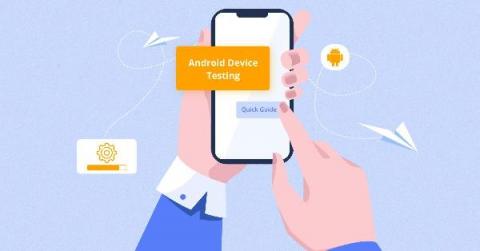Systems | Development | Analytics | API | Testing
Testing
The latest News and Information on Software Testing and related technologies.
Your Framework for Success: Introduction to JavaScript Testing at Scale
Android UI Testing: 14 best practices
An application is focused on the perspective of the end-user. We develop, observe and re-iterate as the end-user wants because they are the ones who keep our product, the application, alive in the market. But if I think and act like an end-user, I am sure that the first thing that creates an impression of the product is how the product looks, how I accept it and how it feels to interact. This is called a user interface and arguably, is the first impression of your product.
Android Device Testing: A No-hassle Guide For Testers
We don’t even need a moment to gather which operating system is the most used one. Android development is a booming business because of the number of users it has. It is open source and its development can be ported across devices with relative ease. Plus, it has good backwards compatibility across versions. And, precisely due to this diversity, the need for testing on many devices is paramount.
Why agile teams never stop learning
Have you heard of the misconception that agile is about velocity: i.e. delivering more, at a faster rate? Although this statement is true, it is ultimately meaningless if you don’t deliver value and the customer is not satisfied.
7 B2B web application testing challenges and solutions
Testing web applications comes with many challenges like covering the entire platform, testing with real devices, and protecting data security. B2B customers have high expectations for the web apps they use. They rely on them for their day-to-day jobs or small business functions. The failure of a consumer app can be frustrating.
Maximizing the Value of Testing in Retail and e-Commerce
Spending via smartphones is going up. According to Forbes, smartphones accounted for 46.5% of all holiday sales on Thanksgiving Day 2020, and 40% of sales on Black Friday. This means close to half of all purchases were made not only online, but on a smartphone—which makes the mobile shopping experience all the more critical. Customers expect their transactions and experiences to go off without a hitch. And if that doesn’t happen?
Mobile Application Tests on Sauce Labs
Tips for Javascript Perfomance Testing
No user likes to spend time waiting for a web page to load. No web developer likes a website or app to fail either. It’s important to focus on creating quick loading pages with error-free code. JavaScript is used to build the majority of the dynamic, real-time applications. JavaScript’s strength is in the context of apps that update content dynamically with minimal latency. JavaScript performance testing should be a priority for ensuring a good end user experience and optimal performance.
A Beginner's Guide To Test Automation With Javascript (Nightwatch.js). Part 2.
Welcome to the “A beginners guide to test automation with Javascript(Nightwatch.js)” blog series part 2! If you have missed out on the first part, you can read it here. In this article we will look into the following and as always – feel free to skip to any part you are the most interested in: Code used in this article can be found in Loadero’s public GitHub examples repository here.











